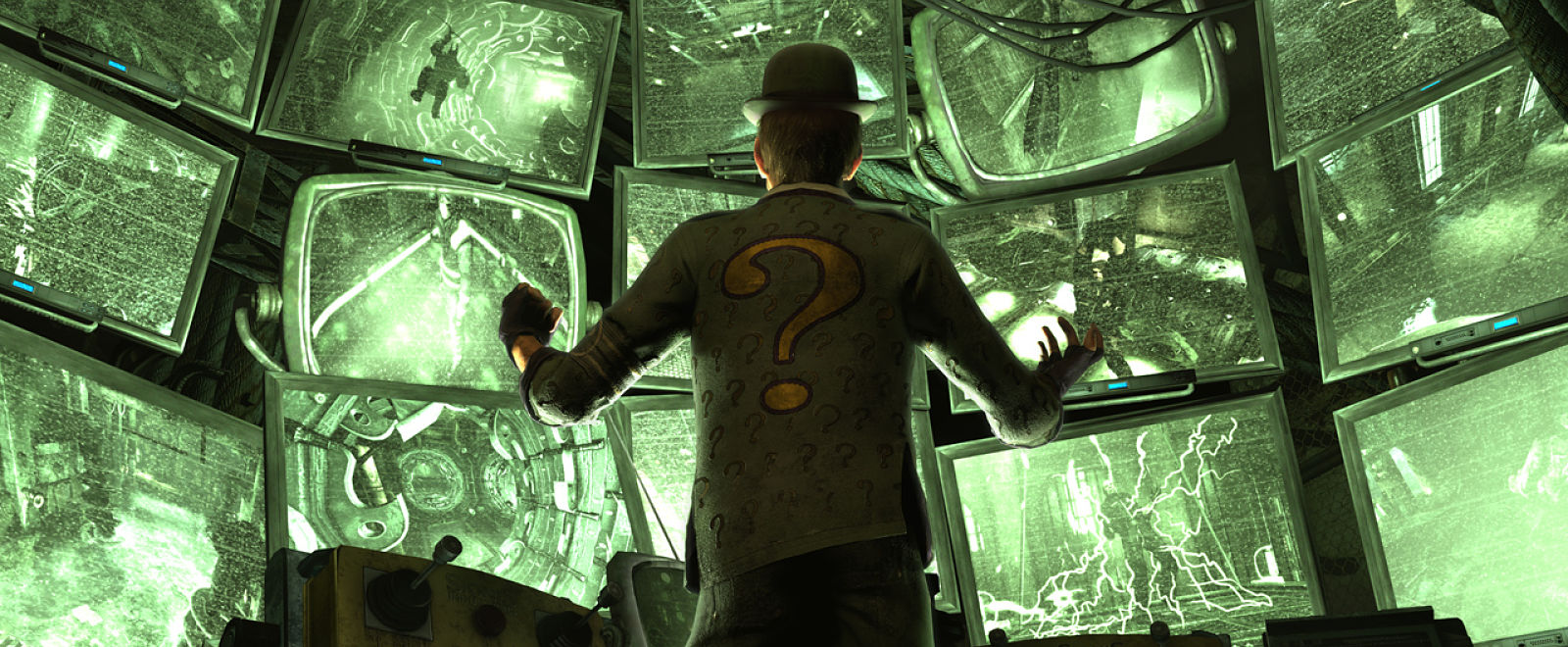Who would have guessed that in the saga of Batman games— Arkham Asylum, Arkham City and Arkham Origins— that one of the most memorable battles isn’t with title-fighters Joker, Poison Ivy or The Riddler, but second-stringer Garfield Lynns, the Firefly. In the comics, Firefly is loosely defined. Creators feel the flexibility to brand him as either a desperate pyromaniac determined to “dance” with massive plumes of flames, or just an arson-centric crook, hireable to steal diamonds or annoy Black Lightning. In Arkham Origins, he’s scripted to fit the latter, one of the mercenaries hired by Black Mask to take out Gotham’s vigilante. Despite being part of a set (which included turncoat Lady Shiva and the real, real expendable Electrocutioner), Firefly got arguably the biggest chapter in the entire game.

The Joker’s already been locked up, Black Mask has vanished and Bane’s militia is winding down. The Gotham Bridge, a stretch you’ve swooped over dozens of times by now, the connection between the new area of the city to the Christmas-reskinned one from Arkham City, is unrecognizable. Chunks of it are missing or aflame. There are smoldering trucks and debris turning it into a mile- long fireplace, an inferno stretched across the skyline. There are bombs, and there are hostages. There is a showdown with Lynns that takes you on a wild aerial ride around the destruction, whipping you through the embers like a lion jumping through flaming hoops. The two basic parts of Firefly’s persona— that he can fly and likes fire, are dramatically juiced for all their worth— and it pays off beautifully.
In the world of comics, a superhero is balanced out by his or her villains. You can easily slap a few powers and gadgets into a set of tights, but unless they’re at odds with someone who makes them interesting they’ll never gain access to the higher pantheons. Spider-Man, a nerd with powers, combats with a roster of total losers with powers. Superman and Captain Marvel are nigh strong, but they clash with bald geniuses who hate them so dang much. Batman is famous for being a scowling affluent avenger, but he’s also famous for having some of the best villains. No one gets excited about supervillains quite like his. You can name more of his rivals than you can your second cousins.
But in his video game adventures, there’s a clear struggle to do these foes justice, and few get the kind of magnum opus that Firefly received. In the Arkham games, Two-Face just has a crew that takes a pummelling for him. Black Mask tries to ambush you, and fails miserably. The Joker has a knack for roosting in bland industrial settings. Arkham Origins’ objectives ends with some real goalpost- moving, capping off with a truly unspectacular confrontation with a man named Bird, whose defining feature is a tattoo you’ll mistake for a beard.
The Arkham games feel like evolving experiments with form, which manifest directly through the inmates. The first was the most sound, a sneaky Zelda map with secret lairs standing in for dungeons. Arkham City began like that— The Penguin’s decadent museum filled with interconnected puzzles—, but then the old shell crumbles. Zsasz gets a more prominent role as a crank caller, which starts out interestingly before you realize that he, and Hush, and Bane, and Deadshot, and The Riddler, and Azrael have all become variations of fetch-quests.

It is the parsing of these characters that makes a difference between a memorable encounter and a glamorized cameo. Arkham isn’t the first series to juggle this conundrum; playing through both the Super Nintendo and Sega Genesis Adventures of Batman & Robin shows an interesting circus of levels. Foil the Penguin’s gallery heist, survive the Joker’s funhouse, defeat the Riddler’s labyrinth—these are interesting tasks built around the villains’ characteristics, unlike less spectacular tasks like chasing Catwoman down a bunch of fire escapes or strolling through a university in a gas mask before punching the Scarecrow in the gut.
In the Genesis version, the only memorable level is the Mad Hatter’s, a psychotic trip-out filled with Dynamite Heddy puppetry, an onslaught of tiny Tweedle Dums and a showdown against a top hat in a terrifying cosmos. It, like Firefly’s moment to shine, feels like taking the basic building blocks of Hatter’s “thing” and allowing it to become a spectacle. Not just Wonderland, no— a madcap glow-in-the-dark miniputt with magic tricks and monster cats. It feels like the level the developers, the appropriately Lewis Carrolly named Clockwork Tortoise, were most proud of. Funnily enough, neither the Genesis or Nintendo version seem to know what to do with Two-Face, who serves as an excuse for a vehicle chase in both. And his Arkham City appearance couldn’t find much to do with him either.

Batman seems to bring out the weirdest in criminals, the cowardly, gimmicky lot. His rogue’s gallery are outlandishly uncanny and each different from one another. They all got their schticks locked. His z-listers like Crazy Quilt and Killer Moth feel more interesting than Superman’s b-listers like Metallo. So the Arkham games are working at their best when they’re showing these criminals at their worst, which is how you end up with Firefly and Calendar Man becoming better conversation pieces than poor old Two-Face— a great walking metaphor but terrible videogame heel.
